Blockchain Technolgy in Finance: Intro
Instructor: Katya Malinova
Course : F741 Winter 2021

Agenda for the Next two classes
- Where this is coming from, why, and why should you care.
- How does it work?
- What can it do for finance, and what are obstacles?
- Applications:
- Issuing and transferring money
- Asset trading
- Innovative lending
- Innovative financing tools
- Related developments:
- Libra
- Central-bank issued digital currencies

Where this is coming from, why, and why should you care.
What's wrong with the traditional world of finance?

cheap tech, high prices?



Illustration of Infrastructure Frictions: money transfers

Version 1: They use the same bank
Change ledger entry locally

Version 2: They use different banks but the banks have a direct relationship
Alice's bank transfers from Alice's account to Bob's bank's account
Bob's bank transfers from its account to Bob's account

Version 3: They use different banks that have no direct relationship
Alice's bank transfers from Alice's account to its own account
Bob's bank transfers from its account to Bob's account
Central Bank
Central bank transfers from Alice's bank's account to Bob's bank's account

International transfers
Alice's bank transfers from Alice's account to its own account
Bob's bank transfers from its account to Bob's account
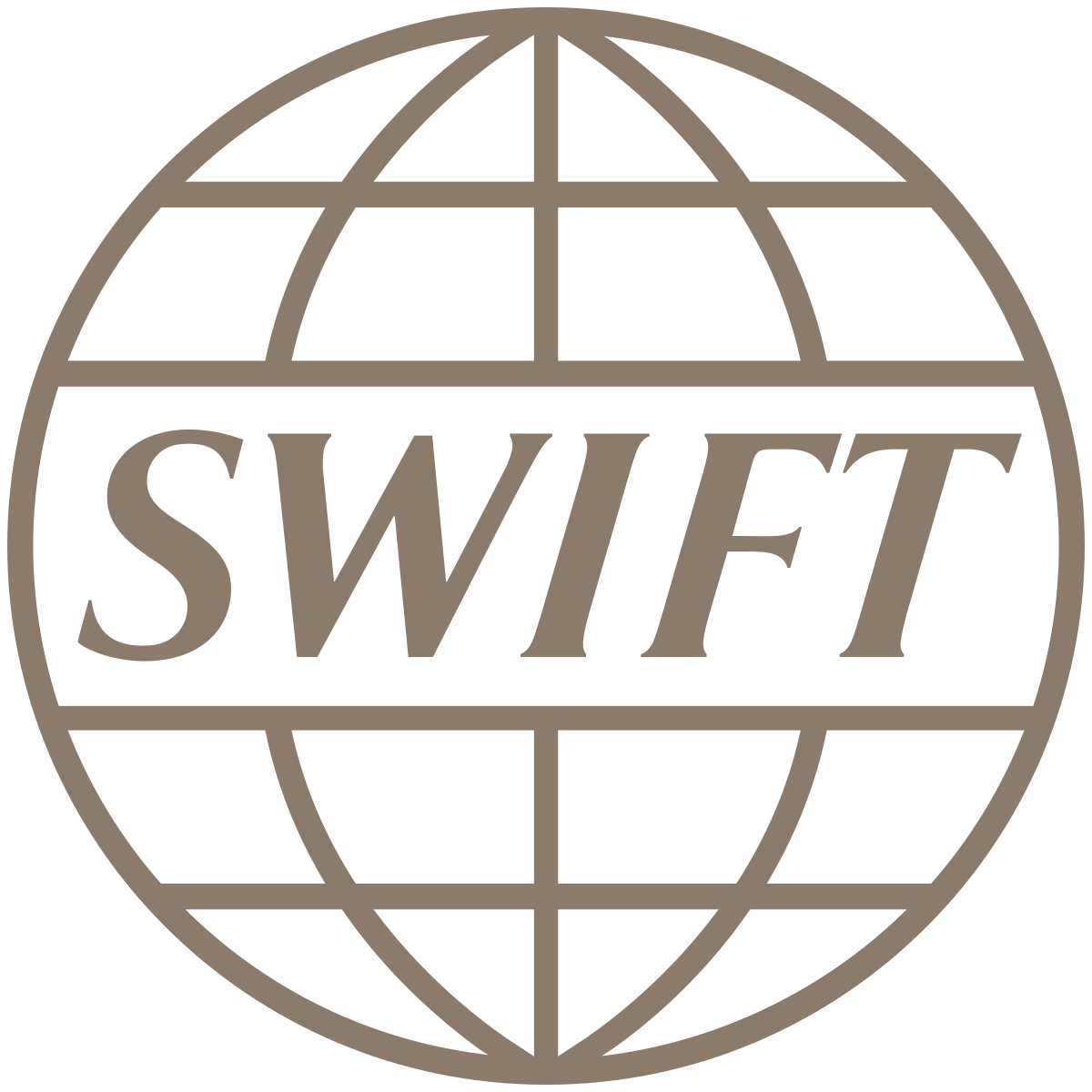
use the Swift network of correspondent banks


Source: Wendy Rotenberg via Andreas Park's slides
Bottom Line
very complex
many parties
lots of frictions and points of failure
very expensive


Would we design market this way if we were to start "from scratch" today?
Where this is coming from, why, and why should you care.
Start from scratch. Crazy thought: a single ledger?

"silos" &
painful
transaction
reconciliation
"joint ,single system"

Why should you care? Isn't this too distant of a world?
The world of finance is evolving as we speak!




Existing solutions
Problems?
-
Risky side effects of "Tech First" solutions
-
POWER CONCENTRATION/MONOPOLY
why should you care? Because The world is changing!


old days: silos
today: cloud computing
cloud data centers are a worldwide affair
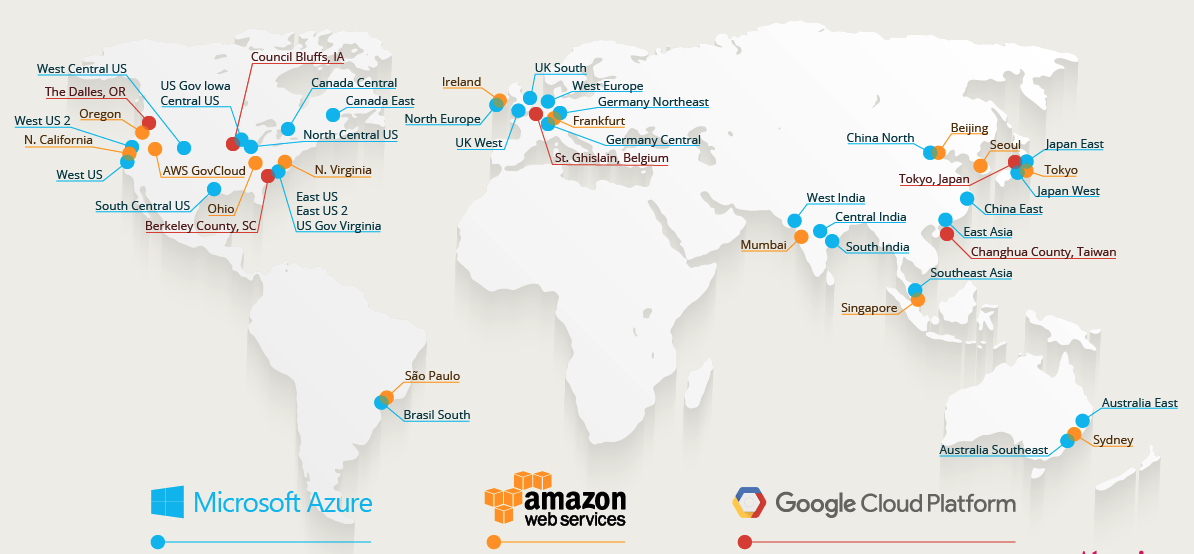
why should you care? Because The world is changing!
January 04, 2021
The U.S. Office of the Comptroller of the Currency (“OCC”) published an interpretive letter that permits them to custody cryptocurrencies.
Quoting from Forbes: "A bank may use stablecoins (cryptocurrencies designed to minimize the price volatility) to facilitate payment transactions for customers.
In doing so, a bank may issue stablecoins, exchange stablecoins for fiat currency, as well as validate, store, and record payments transactions by serving as a node on a blockchain."
why should you care? Because The world is changing!
Nokia's market shares for devices:
- 2007: 49.4%
- 2012: 3%


why should you care? Because ... History!
Paid-for vs. valued
- Keyboard
- Security
- Being businessy
- Cool and cutting edge
- Being Canadian
- Independence from desk
What did they pay for?
What do people value?

- Mobile email
- Brand name
- Easy access to branch
- Great product range
- Fair prices
- Great advice
- Latest tech
- Friendly tellers
- Safe-keeping of assets
As banks move data into "the cloud," do we need the banks?
Generic Bank
Why should you care? Blackberry vs generic bank
Key Insight: Open Platforms provide value




What took place of blackberry?
decentralized finance
provision of financial services without the necessary involvement of a traditional financial intermediary
(bank, broker-dealer, insurance corporation)

Why should you care?
\(\Rightarrow\) it's growing and it's coming
disclaimer: compared to existing markets this is still a tiny amount
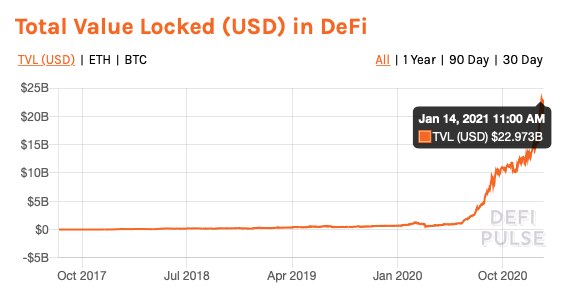
Source: https://defipulse.com
disclaimer: compared to existing markets this is still a tiny amount
disclaimer: compared to existing markets this is still a tiny amount
How does it all work and why?
Distributed Ledger/Blockchain Technology
- "joint, single system" "shared resource" "common infrastructure"
- Features:
- secure storage of information and transfer of value
- guaranteed execution of code
- Promise
- open platform
- global reach
- frictionless finance

From our PollEv: why opt for traditional FIs?
How do we establish trust in commerce?
trustworthy People
long-term Relationships
reputation
contract law




institutions

How do we get trust in an open system with anonymity?

What's needed for trust in anonymous deals?
Authority
Authority
Do you have the item?
Do you have power over it?
Tool: "key" cryptography
What's needed for trust in anonymous deals?
Authority
Execution
Execution
Can we agree that it happened?
Tool:
consensus algorithm
What's needed for trust in anonymous deals?
Authority
Execution
Continuity
Immutability and Continuity
Are the records immutable?
restricted permissions
really difficult to hack
Authority
Authority
Tool: "key" cryptography
Simplest case: symmetric encryption:
public key P = private key S
Small detour: sending a encrypted message
Pb
Sb
Pb
Sb
Small detour: sending a encrypted message
Modern encryption: asymmetric encryption
public key \(P_b\), private key \(S_b\)
Alice sends Bob a message and the signature provides proof that this message is from her
What we really need: digital signatures
Sa
Pa
Pa

Execution
Security
Demo [optional]
Anders Brownworth has an excellent interactive web demo that illustrates the concepts discussed above in a bit less abstract way. He also explains the relation between "hashing" and "mining", and a few other tech terms (e.g., a "nonce") in plain English.
You can watch his YouTube of the demo here:
https://www.youtube.com/watch?v=_160oMzblY8
Once you have seen the video, you can try hashing and mining yourself here:
https://andersbrownworth.com/blockchain/hash
He also has a demo on digital signatures. Everything is accessible from here:
Security
Potential problem: double-spending
Cryptography
\(\Rightarrow\) signature cannot be hacked

B3
B1
B2
B4
B5
Contains transaction from Alice to Bob
Can Alice rewrite history?
Immutability
B3
B1
B2
B4
B5
B6
Where to add a new block \(B_7\)?
- What if you add it to \(B_3\)?
- future block \(B_8\) more likely to be added to \(B_6\)
- \(\to\) lose "coinbase" reward
- \(\to\) add to \(B_6\)
Detour: Longest chain rule
Equilibrium for "the longest chain"? - Yes!
- "Blockchain Mining Games" by Kiayias,Koutsoupias, Kyropoulouz, and Tselekounis, Proceedings of the 2016 ACM Conference on Economics and Computation, 2016
-
"The blockchain folk theorem" by Biais, Bisière, Bouvard, and Casamatta, RFS 2018
Note:
- accidental "forks" can happen, in particular in fast chains (because of system latencies)
- \(\to\) need several block confirmations to accept as transaction as settled
B7
B3
B1
B2
B4
B5
- be faster
- or: be able to block confirmations
B8
B7
B9
B10
B6
Contains transaction from Alice to Bob
Alice wants to undo the transaction by rewriting history with B6
Selfish Mining Attack
How?
\(\to\)
create predictability of mining
\(\to\)
have 51% of mining
(= confirmation) power
Back of the envelope calculation (based on 2018)
- hashrate: 25,000,000 TH/s
- best GPUs have 2.5GH/s per card=0.0025 TH/s
- => need 25,000,000 x 400 x 0.5 = 5,000,000,000 GPUs
- 1 GPU costs around $200
- =>Cost = $1,000,000,000,000
- Note from 2020: this cost has only gone up
NB: there is a slightly more subtle view of selfish mining in which the miner creates a block but holds it back to keep mining exclusively on a part of the chain. Sapirshtein, Sompolinsky, and Zohar (2015) show that 23.21% of mining power is sufficient for such an attack
Selfish Mining Attack

Brief Detour: (hard) forks
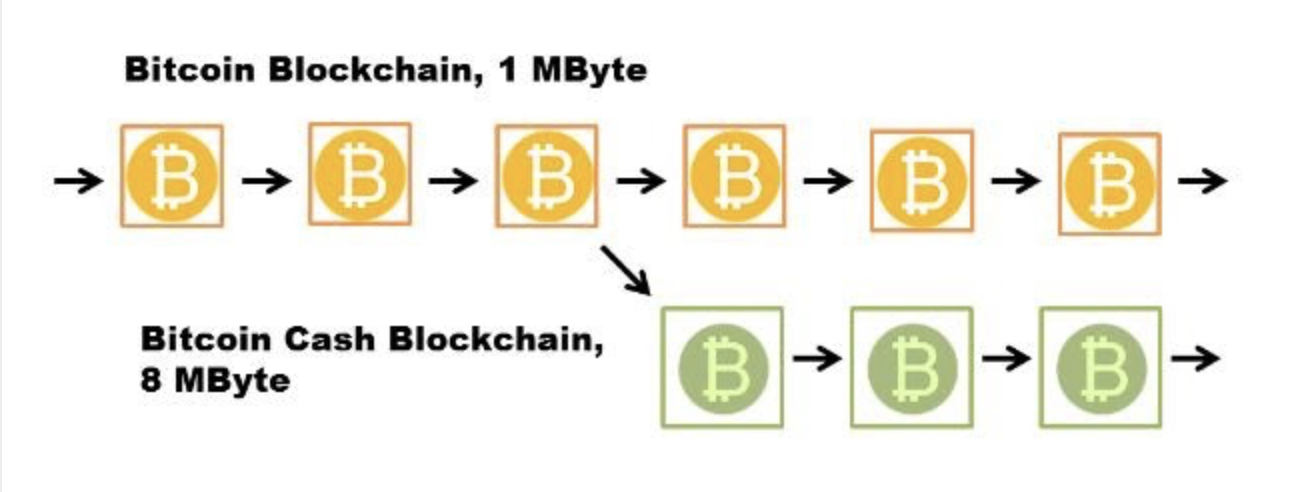
Alice owns 1BTC pre-fork
Alice owns 1BTC and 1BCH post-fork
Block size limit ("old rules", original crypto: BTC)
Block size limit
("new rules", forked crypto: BCH)
What can it for finance, what are problems and obstacles?
One more application:
a stock trade
Alice wants to sell ABX
Bob wants to buy ABX
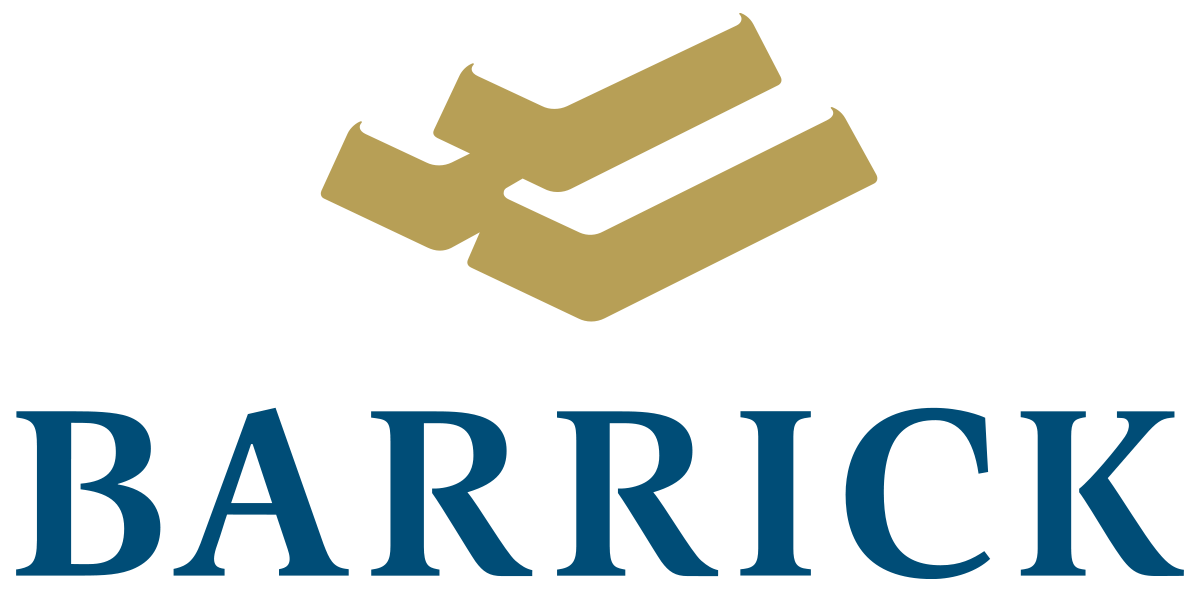
sell order
buy order




Clearing House
Stock Exchange
Broker
Broker

3rd party tech
custodian
custodian
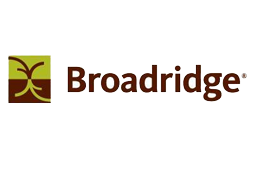
record beneficial ownership
central bank for payment
With Blockchain: single ledger for money and securities

0xA69958C146C18C1A015FDFdC85DF20Ee1BB312Bc
0x91C44E74EbF75bAA81A45dC589443194d2EBa84B
0xA65D00Eda4eEB020754C18e021b1bF4E66C9Ed90
Detour: Ethereum
- blockchain 1.0
- first solution to double spending
- clunky, slow, expensive
- huge following and computing power
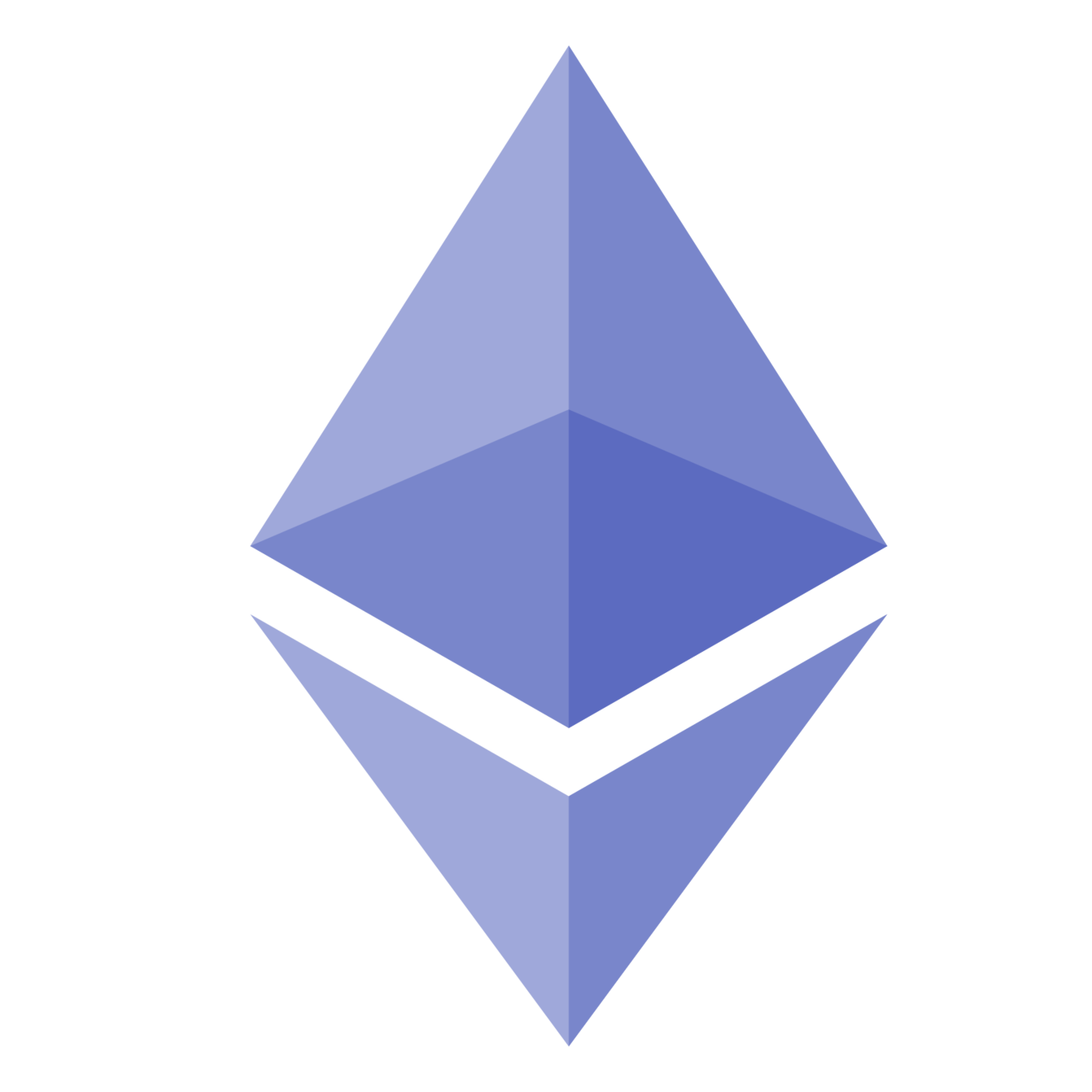
vs
- blockchain 2.0
- smart contract platform
- highly flexible
- foundation for many private initiatives
"Let me just say how impressed I am with Ethereum...If Bitcoin is email ––a one-trick pony, so to speak, but obviously revolutionary–– Ethereum goes far beyond that; it's more like the Internet...The whole idea of DeFi really is, number one, it’s obviously revolutionary, and I think at the end of the day could lead to a massive disintermediation of the financial system and the traditional players."
Heath P. Tarbert, CFTC Chairman, October 2020
blockchain Use cases
Think of (or at least google) blockchain use cases and Let's chat about these in Lecture!
Usage of blockchain in financial industry
Areas of applications
moving value (remittances)
digital money: real-time settlement, reduced reserves
tokenization of assets
automization of contract payments
securitization
systems and infrastructure reorganization
digital identity
new forms of financial contracts, assets, and forms of financing
Obstacles?
Business Challenges
What Changes in Business Models can Blockchain Technology bring?
What does blockchain do?
peer to peer value transfers
self-powered platforms
contract execution
disintermediation
Who do you dis-intermediate, and then who is your customer?
issuer
investor
broker-dealer
The Business challenge of dis-intermediation
investment advisor
(Tech) Obstacles?

- July 2019: Nakamoto consensus consumes energy on par with Switzerland
- No connection between energy burned and economic value created
Proof of work uses unsustainable amount of energy
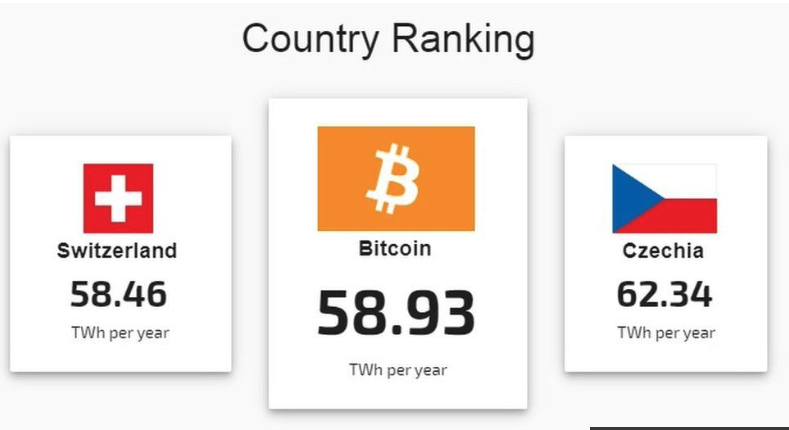
Reality Check: Capacity
| transactions per second | T per 12 hours (business day) | |
|---|---|---|
| Bitcoin | 7 | 302,400 |
| Ethereum | 30 | 1,296,000 |
| Algorand | 2000 | 86,400,000 |
| Conflux | 4000 | 172,800,000 |
| Athereum | 5000 | 216,000,000 |
| Payments Canada ACSS | 648 | 28,000,000 |
| US retail | 7639 | 330,000,000 |
| Canada number of equity trades | 46 | 2,000,000 |
| Orders on Canadian equity markets | 3588 | 155,000,000 |
-
Tweaks: lighting network (BTC) or side chains, larger block size possible, but there are limits
-
microtransactions, IoT, and other smart contract use cases place very high demands
Scalability projects for Ethereum
- Ethereum blocks have no size limit
- but: gas limit imposes computation limit and thus transaction limit
- note: in contrast to Bitcoin, Ethererum always announced that it would eliminate proof-of-work eventually
Root Problem
- Side Channels:
- Keep two-party interactions off the main chain and use chain only for terminal settlement
- Sharding
- instead of storing all info on all nodes, break up the blockchain into shards
- \(\to\) hard problem!
Solutions

https://blog.stephantual.com/what-are-state-channels-32a81f7accab
Many Other Solutions in the works
- Bitcoin blockchain: "proof-of work" \(+\) only the longest chain is viable (lots of energy wasted!)
- Different consensus protocols (loosely: to obtain agreement)
- Conflux blockchain: "proof-of-work" \(+\) a directed acyclic graph (DAG)
- think "parallel processing"
- \(\to\) 4,000 transaction per second
- Avalanche consensus (loosely: repeated voting by random subsamples of "validators")
- Other ways to compete for the "right to add the block"
- "proof-of-stake": prob of winning \(\propto\) staked wealth
- issues remain ....
- "proof-of-stake": prob of winning \(\propto\) staked wealth
- Conflux blockchain: "proof-of-work" \(+\) a directed acyclic graph (DAG)






From Snowflake to Avalanche - Emin Gün Sirer
a better consensus mechanism: avalanche
now in operation in Athereum (fork of Ethereum)

Proof-of-Stake: Key issues
B3
B1
B2
B4
B5
B6
B7
Key problem of Proof-of-Stake (PoS):
How to incentivize support of longest chain?
Where to add a new block B7?
- PoW: only longest chain
- PoS: could add both at B3 and B6 (nothing-at-stake)
- solution: punish deviations!
B3
B1
B2
B4
B5
have a sufficiently large stake
B8
B7
B9
B10
B6
Contains transaction from Alice to Bob
Alice wants to undo the transaction by rewriting history with B6
Selfish Mining Attack revisited
How?
\(\to\)
create predictability of mining
\(\to\) concern about
"long-range attacks"
(if Alice & Co. had lots of money early on, they may start a new branch from far back & control it ...)
Bottom line: Proof-of-Stake (PoS) still has issues
Economic result: Fahad Saleh (2021) Review of Financial Studies, "Blockchain Without Waste: Proof-of-Stake" shows that PoS is an equilibrium
current state:
- promised since 2014
- still in discussion
Personal problem: I am yet to see a fully convincing economic paper that describes an equilibrium in a PoS blockchain
Security & Continuity revisited
Security & Continuity revisited
securing the ledger
restricted permissions
really difficult (or costly) to change it
Private vs. public
some key questions
Who gets to update?
Can a higher body prevent
transactions?
Can the past be altered?
consensus
immutability
censorship resistence
Public Blockchains
Main private blockchain systems




Features of Private vs. public blockchains
Think of (or google):
-
features of public vs. private blockchain
-
whether these features are pros or cons
Let's talk about these in class!
Features of Private vs. public blockchains
open to anyone
past cannot be changed
Public Blockchains

private Blockchains
high visibility of transactions
open-access eco-system
slow governance
privacy only at a cost
joint control and governance
straightforward KYC and AML
tech support
transaction secrecy simpler
rely on corporate development
compliance with law (reversion)
control who can access it
censorship-resistance
Application: Issuing and transferring money
A short history of Money
A short history of Money



A short history of Money


A short history of Money
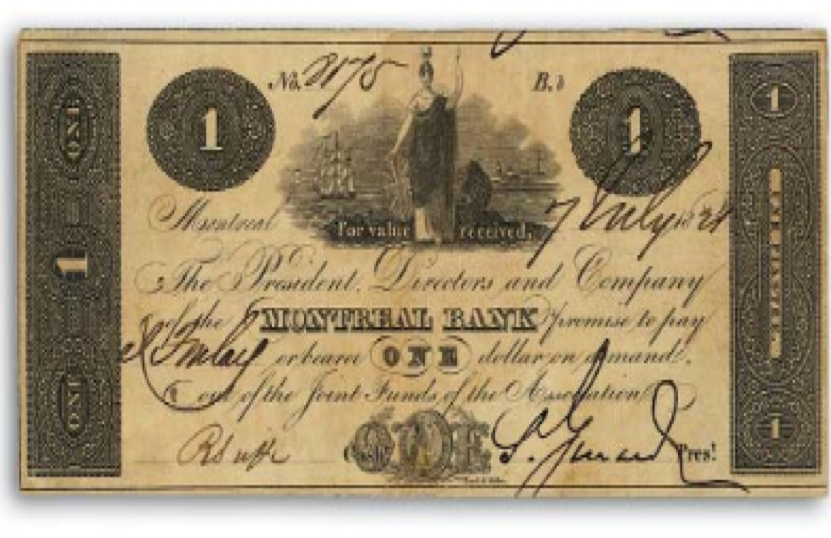
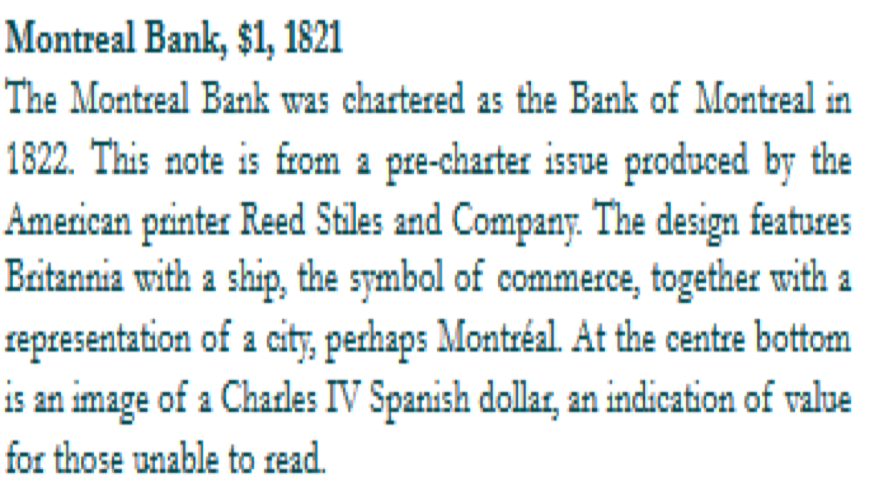


Cryptocurrencies vs USD
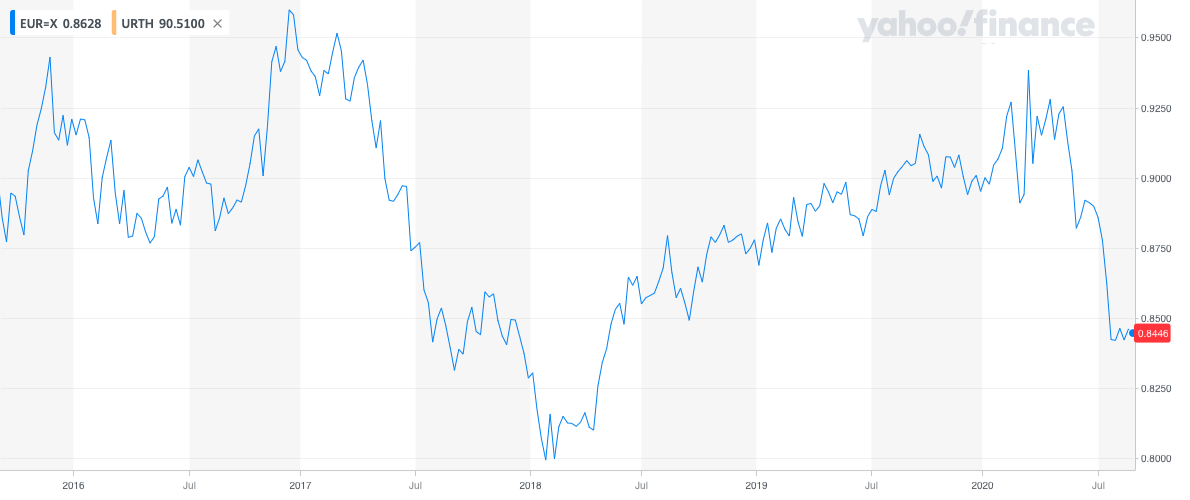
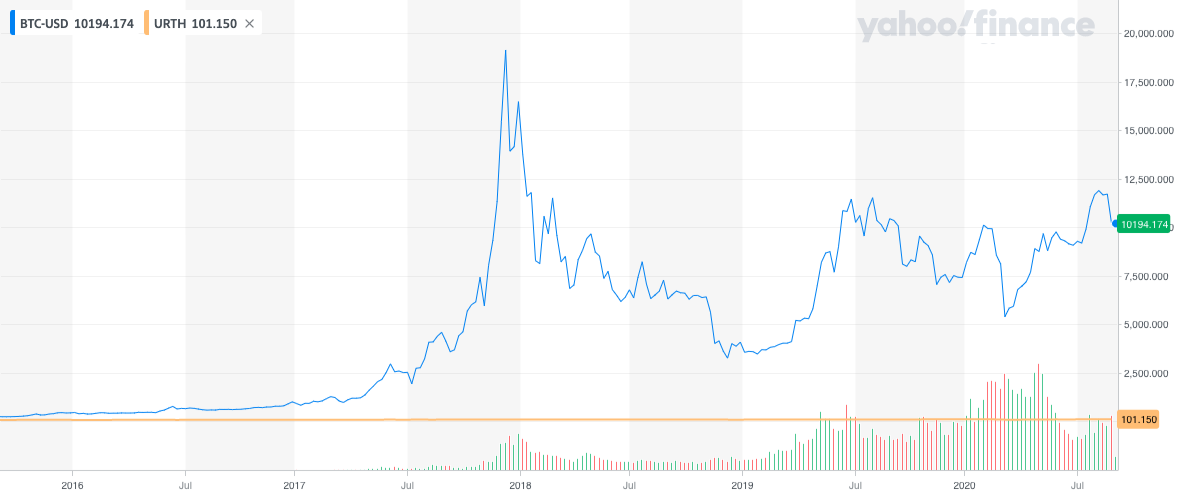
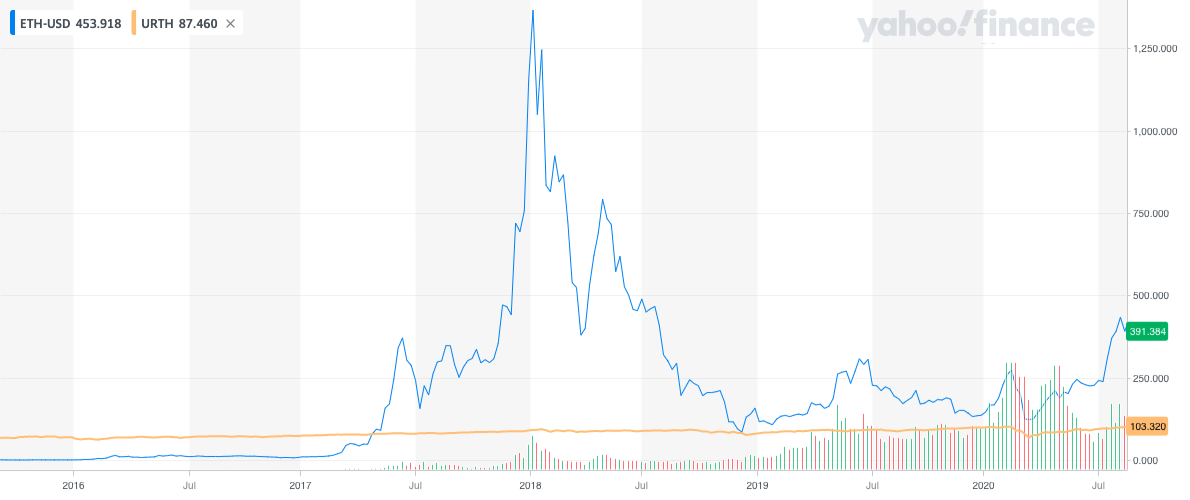
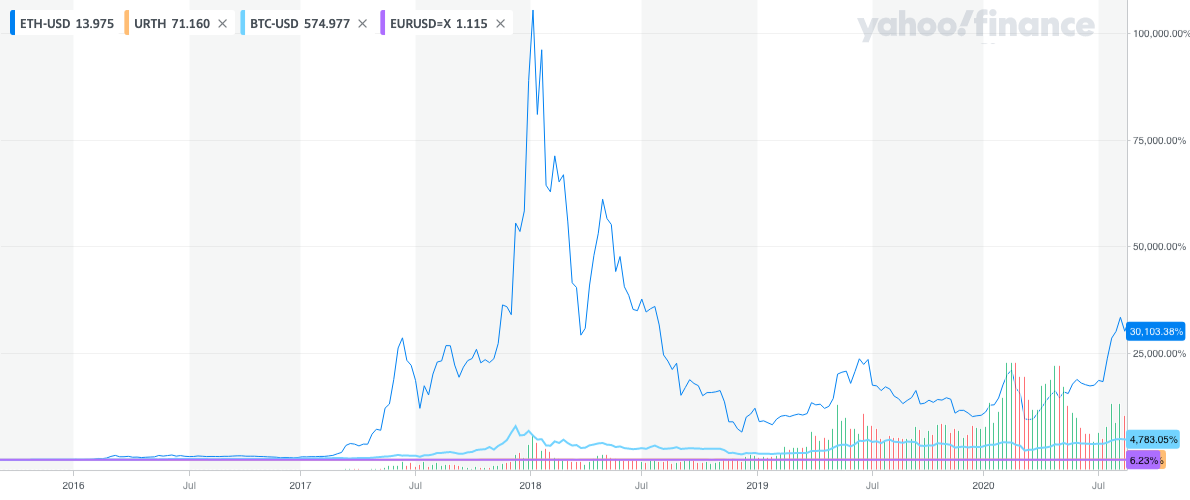
why do cryptocurrencies have value? (or do they?)
Looking forward to hearing your views on this in our live lecture!
Cryptocurrency = money?
Can bitcoin or ether replace "fiat" MONEY?
store of value?
unit of account?
method of exchange?
\(\to\) does not require "double coincidence of wants"
\(\to\) don't have to price everything relative to each other
\(\to\) don't have to spend money immediately upon receiving it
@katyamalinova
malinovk@mcmaster.ca

slides.com/kmalinova
https://sites.google.com/site/katyamalinova/